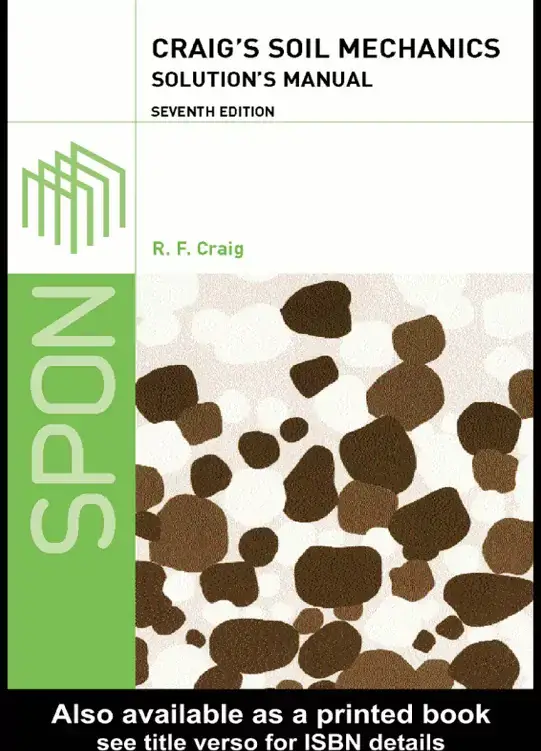Craig’s Soil Mechanics Seventh Edition Solutions Manual – Soil E consists of 98% coarse material (31% gravel size; 67% sand size) and 2% fines. It is classified as SW: well-graded gravellySAND or, in greater detail, well-graded slightlysiltyverygravellySAND. Soil F consists of 63% coarse material (2% gravel size; 61% sand size) and 37% non-plastic fines (i.e. between 35 and 65% fines); therefore, the soil is classified as MS:
sandySILT. Soil G consists of 73% fine material (i.e. between 65 and 100% fines) and 27% sand size. The liquid limit is 32 and the plasticityindex is 8 (i.e. 32 24), plotting marginally below the A-line in the ML zone on the plasticitychart. Thus the classification is ML:SILT (M-SOIL) of low plasticity. (The plasticity chart is given in Figure 1.7.), Equation 1.26, with A equal, in turn, to 0, 0.05 and 0.10, is used to calculate values of
drydensity(d0
, d5
, d10 respectively) for use in plotting the air content curves. The
experimental values of w have been used in these calculations; however, anyseries of
w values within the relevant range could be used. Byinspection, the value of air
content at maximum drydensityis 3.5%. The flow net is drawn in Figure Q2.2. In the flow net there are 3.7 flow channels and 11
equipotential drops, i.e. Nf ¼ 3.7 and Nd ¼ 11. The overall loss in total head is 4.00 m.
The quantityof seepage is calculated byusing Equation 2.16: The maximum and minimum values of void ratio are given by

★★★★★
1.9k views1.1k likes👍 Like
★★★★★★
